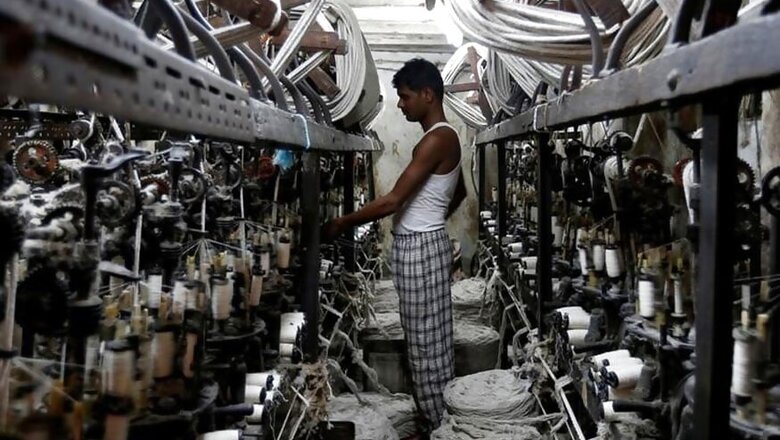
views
New Delhi: With the effects of demonetisation and the transition hiccups of the GST firmly behind, India's economic growth is likely to pick up in the new year but rising oil prices and a firming inflation may spoil the party.
Some believe 2017 is best forgotten as the twin blows of demonetisation and mangled Goods and Services Tax (GST) ripped the economy for the most part.
By some accounts, loss to GDP has been estimated to be around 2 per cent of the GDP. This translates into Rs 3.05 lakh crore considering 2016-17 GDP of Rs 152.51 lakh crore.
But the worse seems to be over and there are early signs of recovery.
After falling for five successive quarters from 9 per cent in the fourth quarter of FY2015-16 to a low of 5.7 per cent in the first quarter of FY2017-18, the GDP growth at 6.3 per cent in the July-September quarter of 2017-18 reversed the trend.
Within GDP growth numbers, a highly encouraging sign is that while export growth has remained positive, import growth has fallen.
After the audacious November 8, 2016, decision to scrap high-value currency, Prime Minister Narendra Modi's government implemented bold reforms including rolling out GST from July 1 and the Insolvency and Bankruptcy Code (IBC).
Also, it committed to injecting sizeable capital into the banking sector to address the 'twin balance sheet' issue and works towards improving farm incomes.
While these reforms brought short-term economic pain, they have boosted India's medium-term outlook.
While Moody's upgraded India's sovereign rating by one notch to Baa2 and changed its outlook to stable from positive in November, World Bank gave India a 30 place jump on its Ease of Doing Business ranking.
"The worst is over for GDP growth. We expect growth to normalise gradually over the next four to six quarters as the disruptive impact of major policy changes fades," Standard Chartered said in its Economic Outlook in 2018 report.
While the economic growth bottomed out after slowing to a 13-quarter low of 5.7 per cent in April-June 2017, it saw growth recovering further to 7 per cent over the next few quarters.
Nomura says Indian economy is expected to witness a sharp recovery in the January-March quarter and its GDP growth is likely to be around 7.5 per cent for 2018.
Also aiding the Indian economy will be the extension of global growth surge of 2017 into the new year.
India, which has long tended to move in sync with the rest of the world, was the only major economy that didn't accelerate in 2017, thanks to twin effects of demonetisation and GST. It is now expected to gain speed this year.
However, it will likely take India a few years to return to GDP growth levels of 7.5 per cent and above (the economy grew 7.9 per cent in the year ended March 2016). This because of private investment - a current weak point for growth - is likely to take time to improve.
A big factor would be how oil prices move. Over the past three months, crude oil prices have increased by about 28 per cent -- from USD 52.3 per barrel in August-end to around USD 67.
Inflation too has risen to breach the target range. Higher oil prices not just threaten to fuel inflation, it may also lead to the widening of the current account deficit - a measure of trade and financial flows that shows how heavily a country relies on foreigners to finance its spending habits.
In the immediate term, the budget presentation on February 1 will set the agenda.
Finance Minister Arun Jaitley will have to do some tightrope walking as he seeks to address the challenges of job creation and rural distress, as well as concerns about fiscal slippages given the additional borrowings and GST collections falling short of the target.
Will he slip back into populism, offering giveaways and subsidies in Modi government's last full year budget before national elections in 2019 is a question everyone is asking? It remains to be seen how he prioritises the competing objectives of supporting growh and achieving macroeconomic stability.
Any which way, the government's hands are full. It has to continue to respond to GST-related issues of the complex tax structure, higher rates and low compliance as well as ensuring progress on resolution of stressed assets under the IBC and the bank recapitalisation plan.



















Comments
0 comment